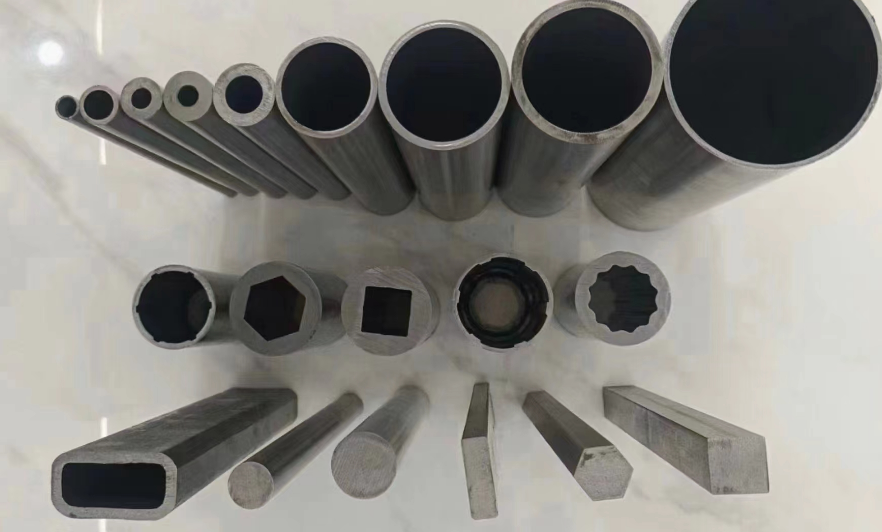In the realm of metallurgy, satin steel vs stainless steel occupy distinct positions, each with its unique set of properties and applications. While both belong to the steel family, they differ significantly in composition, characteristics, and the end uses they serve. In this article, we aim to provide a detailed, authoritative, and accurate comparison between satin steel and stainless steel, highlighting their key differences.

Satin Steel vs Stainless Steel – What’s the Difference?
Satin Steel vs Stainless Steel – 1. Composition
The fundamental difference between satin steel and stainless steel lies in their composition. Satin steel, also known as matte steel, is a type of carbon steel that contains a higher amount of carbon compared to other steel alloys. The carbon content typically ranges from 0.4% to 1.7%, which gives satin steel its unique mechanical properties. This relatively high carbon content is responsible for the metal’s hardness and strength. However, it also makes satin steel more susceptible to corrosion and rusting, as carbon reacts with oxygen and water.
On the other hand, stainless steel is an alloy of iron with a minimum of 10.5% chromium. The chromium content is crucial as it forms a protective oxide layer on the surface of the steel, known as the passivation layer. This layer prevents the steel from oxidizing and reacting with oxygen, thus imparting stainless steel its corrosion-resistant properties. In addition to chromium, stainless steel often contains other elements such as nickel, molybdenum, and titanium, which further enhance its corrosion resistance and mechanical properties.
Satin Steel vs Stainless Steel – 2. Properties
Due to their different compositions, satin steel and stainless steel exhibit distinct physical and mechanical properties.
Satin steel, with its higher carbon content, is significantly harder and stronger than stainless steel. This hardness and strength make it suitable for applications that require high wear resistance and durability, such as cutting tools, knives, and some automotive components. However, satin steel’s hardness also makes it more brittle and prone to shattering under impact or sudden changes in temperature.
Stainless steel, on the other hand, offers superior corrosion resistance, making it ideal for use in environments where exposure to moisture, chemicals, and other corrosive agents is a concern. The chromium-rich oxide layer prevents oxygen from attacking the steel, thus reducing the risk of rusting and corrosion. Additionally, stainless steel is more ductile and weldable than satin steel, meaning it can be easily formed, shaped, and joined using welding techniques. However, its mechanical strength is generally lower than that of satin steel.
Satin Steel vs Stainless Steel – 3. Applications
The unique properties of satin steel and stainless steel make them suitable for different applications. Satin steel is commonly used in cutlery, knives, tools, and other applications where hardness and wear resistance are crucial. Its matte finish also gives it a desired aesthetic appeal in some architectural and automotive components.
Stainless steel, on the other hand, finds widespread use in the food processing, medical, and construction industries due to its corrosion resistance and hygiene properties. It is used in kitchen appliances, surgical instruments, and building materials such as roofing, siding, and railings. The durability and aesthetic appeal of stainless steel also make it a popular choice for high-end appliances and fixtures.
Conclusion
In summary, satin steel and stainless steel differ significantly in composition, properties, and applications. Satin steel, with its high carbon content, offers exceptional hardness and wear resistance but is susceptible to corrosion. On the other hand, stainless steel’s chromium-rich composition confers it with superior corrosion resistance, making it ideal for use in harsh environments.
Thank you for reading our article and we hope it can help you to have a better understanding of the differences between Satin Steel vs Stainless Steel. If you are looking for stainless steel suppliers online now, we would advise you to visit Sino Stainless Steel for more information.
As a leading supplier of stainless steel products from Shanghai China, Sino Stainless Steel offers customers high-quality stainless steel sheets, stainless steel tubes, stainless steel pipes, stainless steel strips, stainless steel coils, stainless steel plates, and stainless steel bars at a very competitive price.
 :+86-13012867759
:+86-13012867759  :export86@sino-stainless-steel.com
:export86@sino-stainless-steel.com